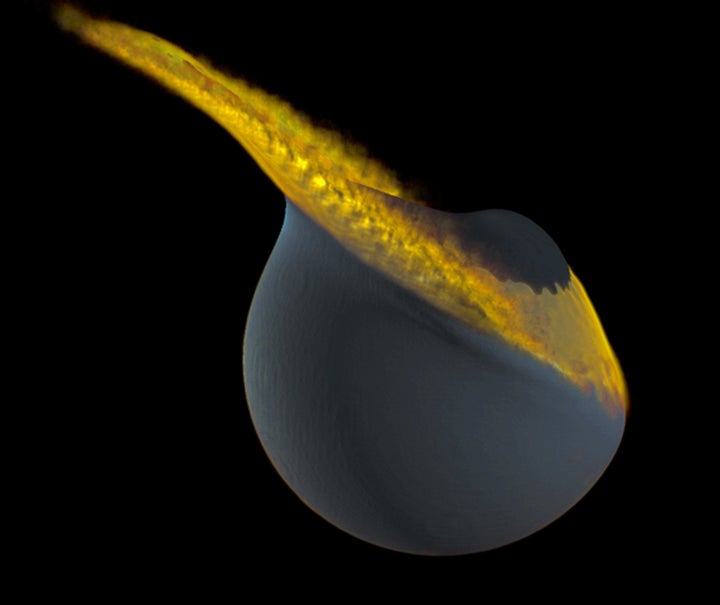
As residents of Earth, we've grown accustomed to having just one moon. Let Saturn and its 62 moons be the solar system's showboat; that just leaves us on this planet to enjoy our single natural satellite all the more.
Or so we thought. According to a new study by an international team of scientists, the Earth actually has two moons at any given time. One is the big bright orb we all know.
The other is an asteroid, about the size of a refrigerator, that gets caught in Earth's gravitational pull as it's whizzing through space. One such Near Earth Object (NEO), asteroid 2006 RH120, served as Earth's second moon for a full year, from July 2006 through July 2007, before spinning off into the void.
"We predict that there is a one-meter-diameter or larger NEO temporarily orbiting the Earth at any given time," according to the research paper, published recently in Icarus, a journal of solar system studies.
Right now is a very good time for Earth to find a new mate. The likelihood of capturing a new, tiny moon is highest in January, the scientists found, when the Earth is 146 million kilometers from the sun, the closest point in its orbit. Another good time is in July, the Earth's farthest point in its solar orbit, when we are 150 million kilometers from the sun.
Once captured by the Earth's gravitational pull, these "temporary moons" usually enjoy three highly elliptical passes around the planet, which takes them about nine months. But some moons probably stick around for years in more stable orbits, the researchers predict. If scientists could find such a stable temporary moon, the scientists hypothesize, a space agency might be able to send a rocket to meet the asteroid, and lasso it back down to Earth.
"The scientific potential of being able to first remotely characterize a meteoroid and then visit and bring it back to Earth would be unprecedented," wrote the research team, which includes Mikael Granvik of the University of Hawaii and Jeremie Vaubaillon from the University of Helsinki.
To land on an asteroid and safely bring it down to Earth, first NASA would have to find one, and that can be tricky. Most temporary moons are too tiny and moving too fast to be detected, according to the study. They're also too far away, usually staying two or three times farther away from the planet than our larger, more famous moon.
The one confirmed temporary moon, RH120, may have been detected by the Catalina Sky Survey in Arizona because it was larger than most, at approximately 10 to 20 feet wide.